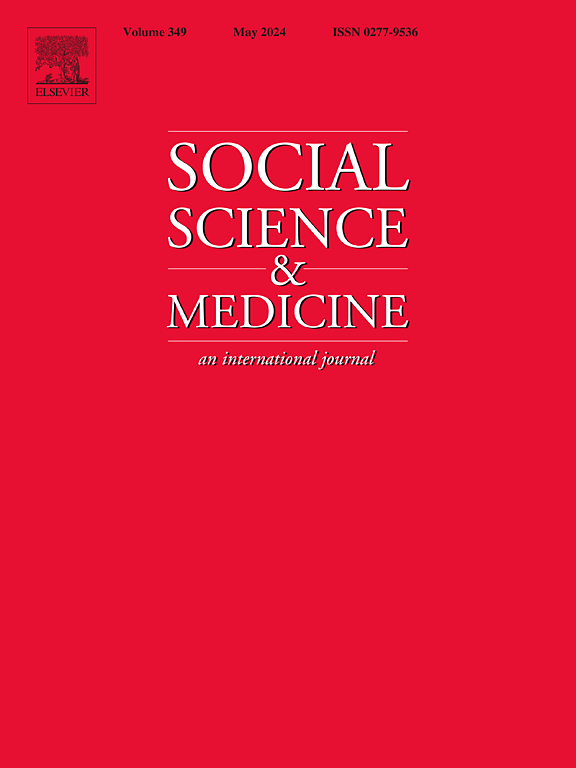使用药物增强日常生活实践中的行动能力:分析成瘾故事对物质使用升级的描述作为反叙述
IF 4.9
2区 医学
Q1 PUBLIC, ENVIRONMENTAL & OCCUPATIONAL HEALTH
引用次数: 0
摘要
这篇文章展示了物质使用如何在各种日常实践中增强行动能力,并作为一种生产力发挥作用,而不仅仅是一种危险和有害的活动。方法数据集包括33个生活故事访谈,参与者自我认定有过物质成瘾的经历。利用行动者网络理论对数据进行了“反叙事”分析。结果分析确定了物质使用如何增加行动能力的四种典型变体。首先,物质使用最初可以增强实现生活目标的能力,然后转变为加强对正常日常活动的依恋的中介。其次,物质使用可以与日常生活中相互促进的轨迹联系起来:帮助摆脱忧虑,加强日常连续性,推进生活目标。第三,物质使用可以通过促进向新现实的彻底过渡并随后稳定它,从而使生活方向发生突然变化。第四,物质使用可以演变成一种调解人,将生活分为两部分:一部分使人能够履行日常责任,另一部分使人能够自由地追求快乐。结论:了解物质使用作为一种生产力的关系、组合和轨迹,并确定它何时以及如何成为限制、威胁或阻碍行为者过上功能性生活的中介,为卫生专业人员和从业人员提供了重要信息。这些知识将加深他们对预防和治疗工作应侧重的要素的理解。本文章由计算机程序翻译,如有差异,请以英文原文为准。
Using drugs to enhance capacities for action in everyday life practices: Analysing addiction stories’ descriptions of the escalation of substance use as counter-narratives
Background
The article demonstrates how substance use can enhance capacities for action in various everyday practices and function as a productive force rather than simply a risky and harmful activity.
Methods
The data set comprises 33 life story interviews in which the participants self-identified as having experienced an addiction to substances. The data was analyzed as ‘counter-narratives’ by drawing on actor-network theory.
Results
The analysis identified four typical variants of how substance use can increase capacities for action. First, substance use can initially enhance the capacities to achieve life goals and then transform into a mediator that strengthens attachments to normal daily activities. Secondly, substance use can become linked to serving mutually reinforcing trajectories in everyday life: assisting breaks from worries, reinforcing daily continuity, and advancing life goals. Third, substance use can enable a sudden change in life direction by facilitating a radical transition to a new reality and subsequently stabilizing it. Fourth, substance use can evolve into a mediator that divides life into two assemblages: one that enables fulfillment of daily responsibilities and another that mediates freedom to pursue pleasure.
Conclusion
Generating knowledge about the relations, assemblages, and trajectories in which substance use acts as a productive force and identifying when and how it can become a mediator that limits, threatens, or impedes the capacities of actors to live functional lives provides important information for health professionals and practitioners. Such knowledge will deepen their understanding of the elements on which their prevention and treatment efforts should focus.
求助全文
通过发布文献求助,成功后即可免费获取论文全文。
去求助
来源期刊

Social Science & Medicine
PUBLIC, ENVIRONMENTAL & OCCUPATIONAL HEALTH-
CiteScore
9.10
自引率
5.60%
发文量
762
审稿时长
38 days
期刊介绍:
Social Science & Medicine provides an international and interdisciplinary forum for the dissemination of social science research on health. We publish original research articles (both empirical and theoretical), reviews, position papers and commentaries on health issues, to inform current research, policy and practice in all areas of common interest to social scientists, health practitioners, and policy makers. The journal publishes material relevant to any aspect of health from a wide range of social science disciplines (anthropology, economics, epidemiology, geography, policy, psychology, and sociology), and material relevant to the social sciences from any of the professions concerned with physical and mental health, health care, clinical practice, and health policy and organization. We encourage material which is of general interest to an international readership.
 求助内容:
求助内容: 应助结果提醒方式:
应助结果提醒方式:


